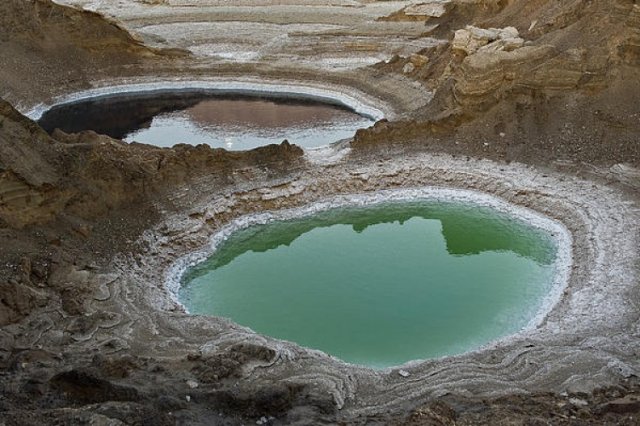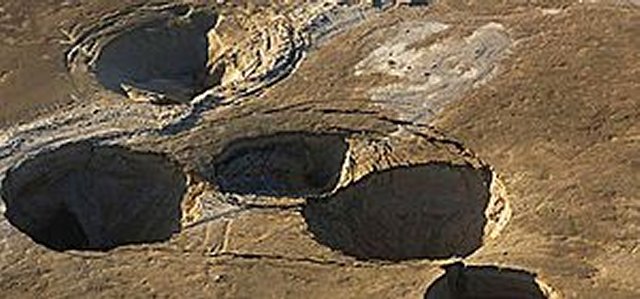MessageToEagle.com – As we reported earlier the Dead Sea is located 426 meters below sea level and is receding rapidly.
If bodies of water could be ghost towns, the Dead Sea would top the list, experts say.
The Dead Sea – the lowest place on earth – is disappearing at an alarming rate, leaving behind thousands of sinkholes that are chipping away at the coastlines vibrant and touristy atmosphere.
The Dead Sea – (also known as Lake of Asphalt, Salt Sea, ‘Sea of Sodom and Gomorrah’) – is known for being almost 10 times as salty as the ocean and for having the lowest elevation on Earth. However, over the last few decades, the shoreline has become known for sinkholes that appear to just pop up out of nowhere.

More than 3,000 sinkholes exist along the banks of the Dead Sea, ABC News reported. And some of these craters dive 80 feet into the ground – the equivalent of about an eight-story building.

Gidon Bromberg, the Israeli director at EcoPeace Middle East, told ABC news that “these sinkholes are the direct result of inappropriate mismanagement of water resources in the region.”
The Dead Sea is robbed of 2 billion gallons of water each year because of water diverted from the lake’s main water source – the Jordan River – since the 1960s, according to the American Associate, Ben-Gurion University of the Negev. Mining of minerals from the Dead Sea has also contributed to the disappearance of the lake’s dense and salty water.
The 2 billion gallons of water translates to a decline in water levels of a meter every year (on average) or a total of 30 meters since 1970, according to research conducted by Duke University.
“With the Dead Sea level dropping so rapidly [a meter a year, on average], these sinkholes are inevitable,” said Mark Wilson, a geology professor at the College of Wooster.
David Ozsvath, a professor of Geology at the University of Wisconsin, said beneath the clay-like surface layer are cavernous spaces that are filled with water. However, as these subterranean spaces dry up with the receding water levels, the surface layer can collapse into the emptied space creating chasms along the banks.
He added that the number of developing sinkholes could be reduced by diverting less water from the Jordan River and allowing water levels in the Dead Sea to rise.
Geologist Eli Raz of Israel’s Dead Sea and Arava Research Center, who has studied sinkholes in depth, said in a research paper that the largest sinkhole to date is about 80 feet in depth and 130 feet in diameter. These sinkholes can also collapse into one another, forming larger, more dangerous craters.
MessageToEagle.com







